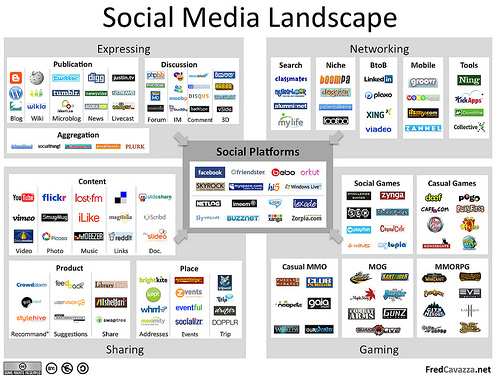News production is not what it used to be. A good journalist these days cannot rely solely on faxed press releases and anonymous phone calls to get the scoop. Trips to the library are a rarity and publishing the news hours after the fact will soon become (if it isn’t already) a big no-no. The Internet has revolutionised the way journalists gather and disseminate new information. It has also redefined news values, especially with regard to immediacy.
Web 2.0 has flooded our industry with a harrowing amount of new methods of communication. It’s understandable for you to feel slightly overwhelmed with the myriad social-networking sites, blogs, community forums and web applications available. You may even feel tempted to forsake technology and fall back on the traditional methods of journalism. My advice to you is, don’t do this. You will be left behind if you aren’t new media-savvy, especially if you’re a rookie in the industry. Educate yourself when it comes to technological advances and familiarise yourself with new media – because it’s not going anywhere.
The importance of multi-media skills
A journalist’s job-description is a lot more comprehensive today than it was 20 years ago. According to Mashable.com’s community manager and social strategist, Vadim Lavrusik, being skilled in multi-media is fast becoming a basic requirement for journalists. Even programming, business and entrepreneurial skills are important if you want to be at the top of your game. Says Lavrusik: “News companies are seeking journalists who are jacks of all trades, yet still masters of one (or more).” The industry is becoming more and more competitive, especially due to cutbacks in print media.
Conducting a successful interview and writing a compelling and informative story still forms the basis of what it means to be a good journalist, but it’s just not enough anymore.*
Is print media dying?
In his blog about the imminent death of print media, Don Irvine, chairperson of Accuracy in Media (www.aim.org) speaks of the “Adapt or Die” approach to journalism. He comments on the decline of traditional media due to circulation losses, as well as the fact that many print publications have migrated to an online model (if they haven’t shut down completely). According to a recent Wall St./Harris poll, 55% of adults surveyed in the US believe that traditional news publications will be dead in ten years, mostly because of online media.
Personally, I don’t think print media will ever really die because it’s reinventing itself in ways that complement new media. We should all do the same. Instead of looking at new media as the enemy, we should be embracing it. If you consider yourself to be progressive and forward-thinking, consider the following:
- Journalists are known to be typically curious people, so why should the buck stop at the Internet?
- Why should we remain satisfied with the “tried and trusted” old methods of production when we have a plethora of new methods at our fingertips?
- Historically, we have fearlessly supported world-changing revolutions, so why are some of us scared to join the Web 2.0 revolution?
According to another recent survey, 74% of UK journalists view social media as an important tool, relying on Facebook, Twitter, LinkedIn and the like to source stories and check facts.
How to use social media in news production – a step-by-step approach
Over the next four weeks I will look at how journalists utilise social media. Each instalment will focus on what new media tools can be used when it comes to a particular phase of news production – from generating story ideas, to cultivating contacts and attracting readers to the story once it has been published.
It is entirely possible and equally necessary to adapt to the brave new world of social media. #watchthisspace
*Read the rest of Lavrusik’s article, 8 Must-Have Traits of Tomorrow’s Journalist.
About the Author

Samantha also works as an assistant lecturer for the University of Pretoria’s Department of Journalism.
Photo credit: flickr.com_ Ivan Walsh













